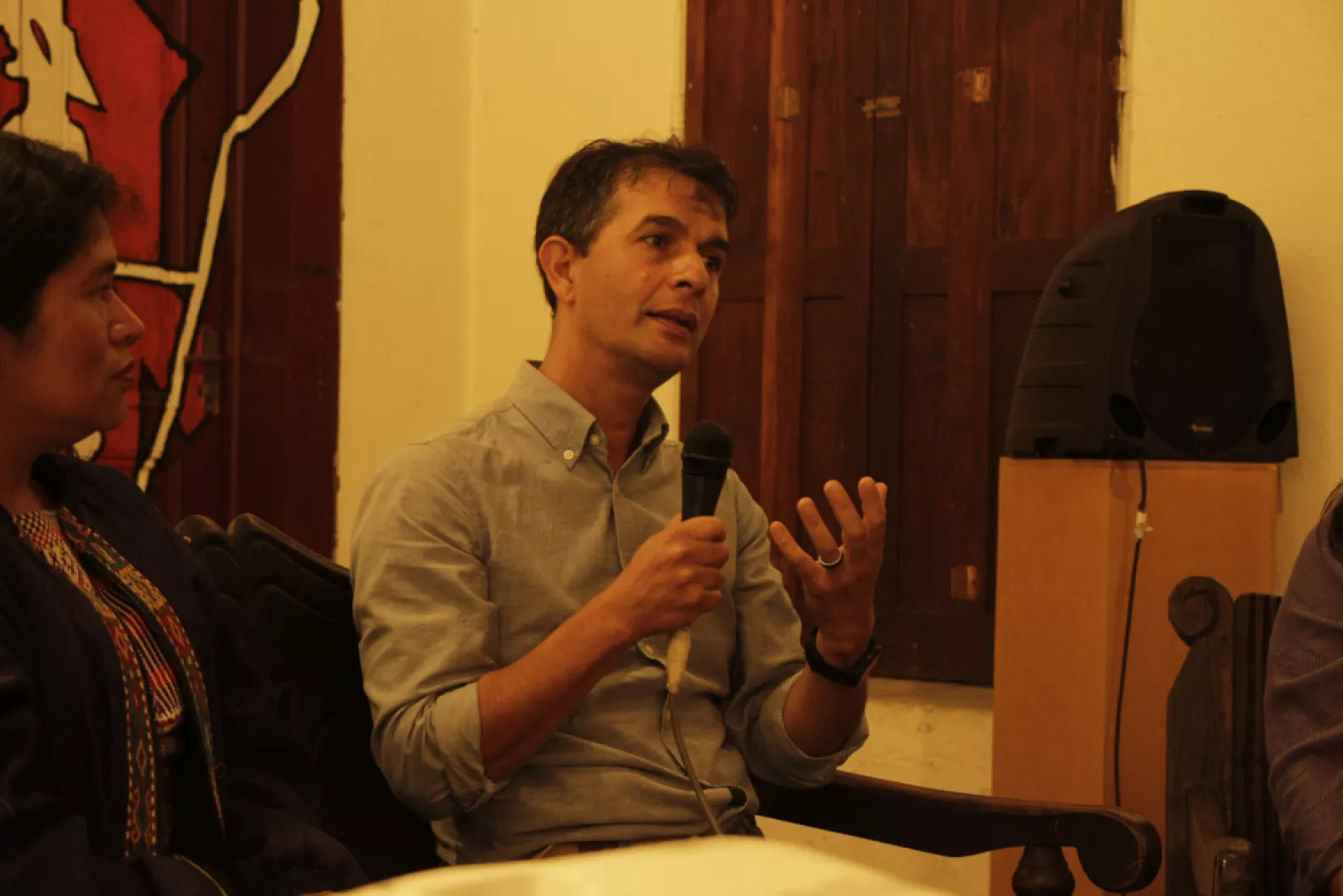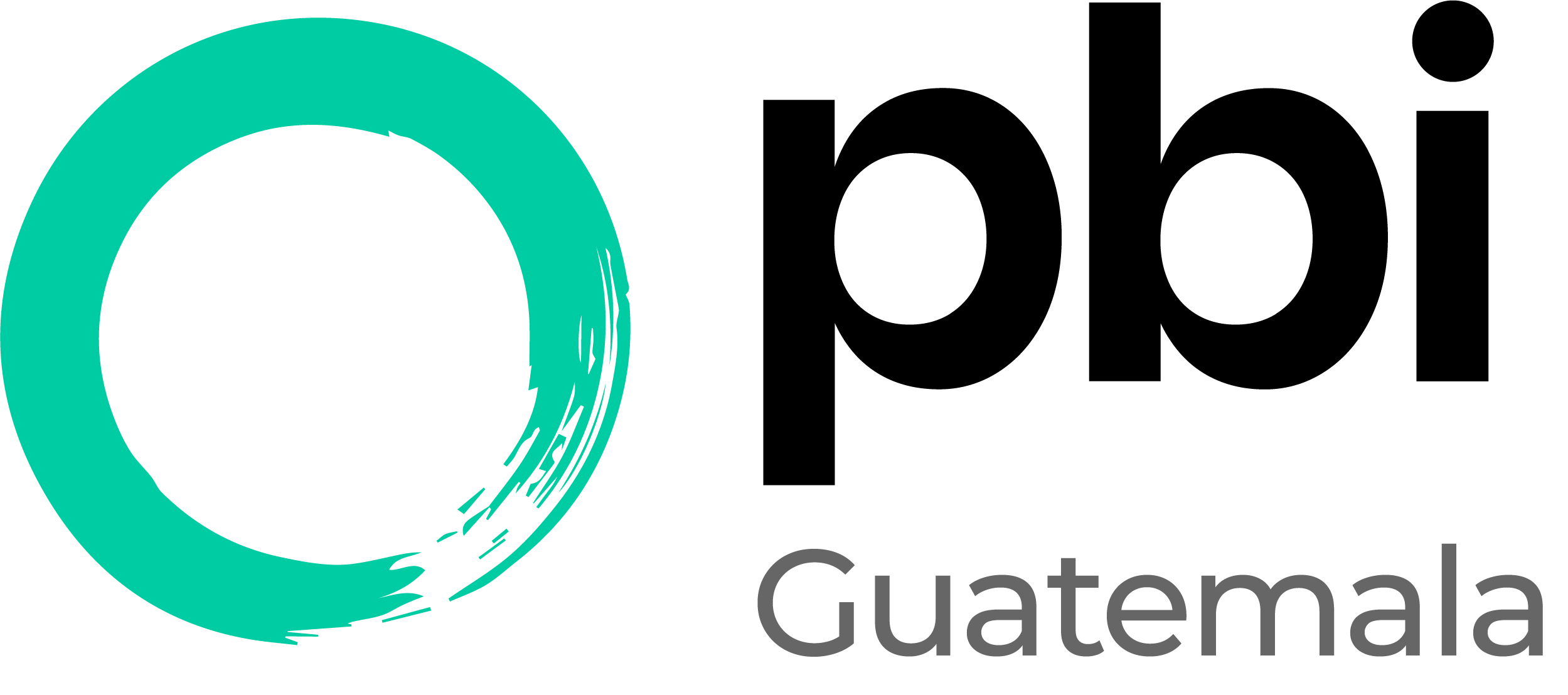Interview with Gerardo Paíz, ecologist with the Madre Selva Collective

Members of the organizations we accompany have shared their growing concern about the lack of water in their communities for several years. To address this issue, we organized a film forum on the climate crisis and water scarcity at the end of February. One of the participants was Gerardo Paíz, ecologist at the Madre Selva Collective, who shared his assessment of this issue.
What geographical and geological conditions make Guatemala a vulnerable territory?
Central America is an isthmus surrounded by two large bodies of water, the Atlantic Ocean to the north and the Pacific Ocean to the south. This makes the conditions very similar to those that occur on an island. The isthmus has highly variable circumstances ranging from excess humidity to significant droughts. This is compounded by the process of climate change that is affecting the entire planet. For example, the El Niño weather phenomenon changes humidity periods throughout the region.
Furthermore, approximately 90% of the underground and surface water sources in Guatemala are contaminated, so we have a high risk of getting sick if we consume this water. It is estimated that by 2025 (within 5 years), there will be a deficit of about 200 million cubic meters of water in Guatemala.
What are the causes of water scarcity in Guatemala?
There are several, one is the destruction of natural ecosystems. The country has only a third of the natural forest cover left, as two thirds have been destroyed and transformed for other uses that have a direct impact on water. Some of these uses are: the generation of electrical energy, industry, livestock, and the capture of rivers.
Another cause is population growth. Guatemala has the second highest population density of any country in Latin America with 159 inhabitants per km². The population doubles every 20-25 years, which means that in 25 years the population density will exceed 300 inhabitants per km².
Water is a natural good that we need to live. When we talk about water as a natural resource, there is a business connotation. But water is not a resource, it is a finite and scarce good that we should take care of. Forms of production and human consumption, as well as the release of waste to nature, are contributing to water pollution and scarcity.
At what point did you start to become aware of changes in the environment?
During the final years of the armed conflict, I was a university student. So we walked through the mountains on study tours, passed through the forests and over rivers, visited lakes and drank water that was fit for human consumption. With the signing of the Peace Accords there was a complete change. The access roads to the communities began to be improved, garbage began to appear and the destruction of forests began to occur. A great change took place in the first five years after the Peace Accords were signed and, unfortunately, it was not for the best. They began a diversity of extractive activities that have had negative effects on water, although they do not want to recognise this.
Is it important to have a water legislation? Why?
I had the opportunity to participate in the Water March in 2016. It was a big movement and, at that time, there was a great discussion in the country about the need for a water law. Until then, 27 versions of this law had been prepared, as each group had made their own. Thanks to the opportunities I have had to work in different communities across Guatemala, I have verified that water is administered, thus there is already some management of this good in one way or another. The work that has to be done is to collect all those experiences into one document which designates access to water as a social priority.
Water is not a good that can be privatized, it is a human right. To deny someone water is to deny them the right to life, to deny them health. Without water we cannot live, we cannot have quality of life. So what each of us has to ask ourselves is what do we do for the water? How are we treating it? I see that in many places, mainly here in the city, in areas where there is access to water, people continue to use hoses indiscriminately, for example, to wash vehicles, and they do not imagine that in other parts of the country people are suffering because they do not have access to water.
Water is not an issue that is the sole responsibility of one institution. It is up to all of society, we cannot expect the mayor, member of congress or minister to solve the problem. We have to start looking for the solution ourselves as people, because we all need water. We need more training; we live in a society that does not know where water comes from, how its cycle works, why it is important to take care of it. We have to learn about this and inculcate this knowledge to all people from the time they are children. It is a matter of life, defending water is defending life.
What is the situation of springs, rivers and lakes in Guatemala?
Guatemala has 38 hydrographic basins. The Motagua river basin, together with the María Linda river basin, are the most polluted because waste waters from Guatemala City drain and discharge into this territory without being treated effectively first. The Las Vacas and Pixcayá rivers are two sub-basins of the Motagua river basin. Half of the population of Guatemala City drains its waste north to the Motagua River. The other half goes south to the María Linda River, which eventually goes to Lake Amatitlán. We should be aware of this, because what happens within this basin affects the entire population.
The Las Vacas river is a sub-basin of the Plátanos river and has three highly polluted streams, one of them is the Chinautla river, which springs from the city landfill in zone three of the capital, and extends for 12 kilometres reaching the Poqomam population of Santa Cruz Chinautla. These people live among the garbage generated by the capital’s population. Almost all of Guatemala’s streams are used as garbage cans or drains. Any ravine in the country is full of bags, packaging, plastic bottles, all thrown away, waiting for it to rain and for the river to take it away so that it ends up in the sea or stays along the path, deposited in some community.
As for the country’s lakes, Atitlán is seriously contaminated with cyanobacteria; people are now discouraged from swimming or using that water. All the pollution from the Polochic and Cahabón rivers reaches Lake Izabal, with the latter bringing garbage from Cobán. There is an additional risk from the African palm agribusiness, which is located in the south, and the large mining concession, the Fénix project, which is to the north of the lake and which, to date, has generated deep social unrest. The only lake that we could say is in a more or less decent condition is Lake Petén Itzá, although not the entire lake, because there is pollution around Flores Island.
In cities, during the wet season do the wells/lakes flood?
In cities like Guatemala, the increasing spread of impermeable cement prevents drainage and adequate filtration from the land. As a result, there is no guarantee that wells can store enough water for the whole year. This is also happening in the departmental and municipal capitals, and has a direct effect on groundwater, which is why wells have to be bored deeper and deeper.
Different populations are beginning to compete for water. It is sad to see that the municipality, instead of looking for ways to improve water intake to feed the wells in the rainy season, is promoting the city’s growth, without regulating the use of cement as an impermeable cover or transforming the streets by using other types of materials such as paving stones or something that allows water to seep through. Drilling a well would not have a bad result if it had a natural infiltration system, but that is not being done. Here in the cities, they are only trying to get the water out there, but they are not making sure that this well will fill again during the rainy season.
What is needed to conserve water?
The restoration of natural systems that guarantee life is important, because water needs a niche to exist. When we have a good rainy season much of the water flows into the sea and doesn’t filter through the soil. It is not only the water, but the country’s soils are also flowing away, because our territory is destroyed. So the first thing to do is to restore our natural ecosystems, but for this we need to change the model of production, construction and waste.
We have to work hard to clean our water sources. It is necessary to install water treatment plants, but there are also other actions to be taken in the short term. We have to create strategic water reserves, because the periods of rain in Guatemala are not as consistent as before. Sometimes there are periods of sporadic rains and then it stops raining, so we have to see how, using the topography of the country, it is possible to start putting up barriers so that the water stays in small dams in the communities, so that the rains are being stored and may be available to people.
We had the opportunity to build a small dam in the Guayabillas village, in the municipality of Jocotán, Chiquimula, where there are very bad water shortages. We built a small dam on a stream and now they have their little lagoon. They are collecting water from the few rains that are falling. It takes a little ingenuity for water to be available. It is not enough just to harvest water from gutters or roofs, because it is not enough to meet human needs.
Finally, all government authorities, the three branches of the State, must enforce the text of the Constitution of the Republic which says that water is a social good and therefore cannot be privatized, but that access must be based on social needs. As Article 2 of the Constitution says, the State of Guatemala is organized to defend life, and defending life is directly linked to defending water. But also we, as a society, have to develop and propose actions aimed at favouring the current population and future generations.
On February 26, PBI Guatemala organized the Cine-forum “Climate crisis and water shortage”, which was held at the Casa Cervantes. It was moderated by journalist Norma Sancir and Isabel Matzir and Gerardo Paíz attended as panelists. The activity was broadcast live on PBI Guatemala’s Facebook. The interview reproduced here was taken from the activity and edited, together with Gerardo Paíz, to adapt it for this article.
